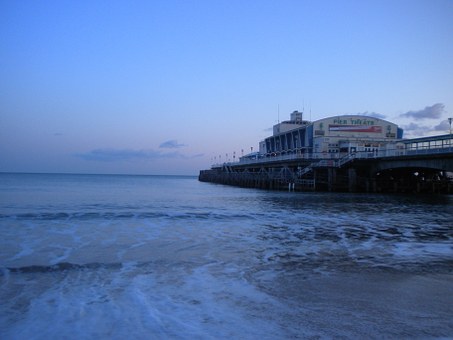Central London Office Review and Outlook for 2010

Central London Office Review and Outlook for 2010
West End Investment
Investment volumes picked up sharply in the second half of 2009
Having started 2009 in the doldrums, West End property achieved a complete turnaround by the year end, returning to the popularity it enjoyed between 2005 and 2007. Turnover for 2009 recorded GBP3 billion - on a par with the previous decade's average after a strong second half.

Continuing the trend seen in the first half of 2009, non-domestic investors remained active in the West End office market, accounting for 62% of all purchases by value. Their focus continued to be on prime and secure income streams, continuing the "flight to security" that was evident in the first half of last year.
Another clear trend in the West End investment market in the second half of 2009 was a diminishing supply of product on the market. Savills' analysis shows that there were nearly a third fewer assets brought to the market in 2009 than in 2008 a factor that undoubtedly contributed to the sharp falls in yields that were seen throughout 2009.
A final change that was seen in the second half of last year was the return of the UK institutional investor. Previously, this segment of investors had been viewed as typically late-cycle entrants and, as such, they were not expected to return as buyers until late 2010 when the Investment Property Databank's (IPD) indices supported their decisions. So, although they remained overall net "disinvestors", some were early to perceive the changing fortunes for rents and, as such, purchase volumes rose dramatically from GBP8 million (in Q1) to GBP300 million (in Q4) over the year.
The second half of 2009 saw further yield hardening in the prime market, with prime yields falling from 5.75% at the end of June, to 5% by the end of December. This brought the overall prime yield shift for 2009 to 100 basis points (bps). However, the biggest change in the second half of the year was in average yields, as measured by the IPD monthly index, which rose between January 2009 and August 2009, peaking at 7.19%.
These then changed direction and began to fall sharply, finishing the year at 6.02%.
Yields continue to harden
Clearly, part of this shift in average yields was due to the movement in prime yields, but it also demonstrates an increasing acceptance amongst investors that the bottom of the leasing cycle is close, making them more comfortable with shorter leases and voids.
Outlook
2010 has already seen a swift response to the improvement in values, with stock levels increasing dramatically. Despite an apparent rosy future for property, many traders are keen to capitalise on a quick profit, perhaps believing that worse economic news is still to come and that the market is more fragile than some predict. January has already seen 21 assets marketed, totalling GBP530 million, compared to eight totalling a mere GBP88 million the previous year.
In terms of demand, domestic institutional inflows are so strong they will have to feature heavily on acquisitions in 2010. Over the course of the year, they can be expected to dominate and outbid on key deals that will inevitably translate into strong evidence.
An improvement in yields to at least 4% by the year end - if not sooner - is very likely, especially given these buyers' reliance on Discounted Cash Flows (DCF) and the forecast for the performance of rents over the next five years.
Overseas entrants that dominated in 2009 will - to a point - get crowded out, especially those that focused on institutional deals, unless they seek to secure a competitive advantage and target less liquid, larger GBP100 million deals. As the leasing market begins to show signs of recovery, well capitalised Real Estate Investment Trusts (REIT) and selected property companies will inevitably target the currently thin development market as they become more comfortable with voids and short leases even in fringe locations.
City Investment
The City of London investment market was restrained by a number of factors in 2009, most notably limited stock on the market and the larger lot sizes that characterise that market. Despite this, the volume of investment activity in 2009 at GBP3.4 billion was marginally up on 2008. The fact that turnover reached such a level was impressive, given that at the half year there had only been just over GBP1 billion of transactions - the quietest six months since the mid 1990s.
2009 saw low levels of turnover despite the GBP1 billion deal on Broadgate
Given that Blackstone's purchase of its stake in Broadgate accounted for more than one-third of the total capital value of last year's purchases, it was inevitable that non-domestic buyers would dominate the statistics. Indeed, including that deal, 90% of the purchases by value were by non-domestic investors.
Private domestic investors continued to be hampered by low Loan To Value ratios (LTV) and large lot sizes, and domestic pension funds and insurance companies also failed to make a single purchase in 2009.
While the focus of the majority of buyers of City of London office investments in 2009 remained longer-term income streams let to secure covenants (eg 88 Wood Street, 100 New Bridge Street), the second half of the year saw the beginnings of a recognition that the leasing market was stabilising. This renewed confidence in the leasing market quickly filtered through to some investors (particularly domestic property companies), and resulted in a resurgence in interest in shorter income deals that might represent refurbishment or redevelopment opportunities (eg 90 Queen Street, 1 Threadneedle Street).
While the UK pension funds and insurance companies did not purchase a single City office building in 2009, the major change in the final quarter of the year was the sharp increase in their interest in this market.
Clearly, this renewed interest is being driven by the fact that not only is City leasing beginning to recover, but many commentators expect that it will show the strongest rental and capital growth of any UK market as it emerges from the downturn.
The second half of 2009 saw a continuation of the trends in prime yields that were evident in the first half of the year. Prime yields hardened from 6.5% at the end of June to 6% at the end of December, bringing the overall correction in 2009 to 100bps. The more interesting trend in the final quarter of last year was the sharp turnaround in the average yield as monitored by IPD. This peaked at 8.22% in June 2009, before finishing the year 175bps lower at 6.47%. Given that a "normal" gap between prime and average yields in this market tends to be 150-200bps, this clearly raises the question of whether prime is underpriced or average has over-corrected.
Average yields closed the gap with prime
Outlook
Savills sees no prospect of a "double dip" in capital values in the City of London investment market this year. While some non-domestic investors will move on to less expensive markets, this gap will be filled and exceeded by the return of the UK institutions. Therefore, the only realistic trigger would be a dramatic increase in the amount of assets coming to the market.
Certainly, there will be some tactical sellers - both those who bought last year or in the middle years of the last boom. There will also be a pick-up in bank-led sales, both from within the National Asset Management Agency (NAMA) and banks closer to home. However, it is Savills' belief that this will not be a large enough pick-up to lead to oversupply. The move away from a flight to security to a flight to growth will make the City office market continue to look like a very attractive location for investors of any type. Some will still be held back by the lack of debt, but the rest will continue to drive selective yield hardening throughout 2010.
Outlook for 2010
2010 will be the year in which upward rental growth returns to the central London office market. However, this growth will be patchy and will be the result of supply shortages rather than a dramatic increase in demand.
Where demand is concerned, the outlook for both London's Gross Domestic Product (GDP) and financial and business services employment growth is positive (but only just) in 2010. This is particularly relevant for the West End office market where demand is closely linked to the health of the domestic economy. In the City of London office market, on the other hand, world GDP growth tends to be a better indicator of demand, meaning that take-up forecasts for the City in 2010 are rather more optimistic than those for the West End.
(For further information on medium- to long-term prospects for London, please refer to Savills' recently released report "Emerging from Crisis: The prospects for London". In essence, the report suggests that London's economy will begin to revert to stronger growth from 2011, and will be the fastest growing major financial centre over the period 2012-2020. While much of this output growth is forecast to be from productivity gains, it will undoubtedly result in faster rates of new business formation as well as net growth in employment across all office-based industries in London.)
Strong growth expected in the London economy from 2011
In Savills' Q4 2009 report, it was highlighted that in all of the last three cycles there had been a growth phase out of the bottom of the cycle when rental growth exceeded 15% per annum. Latest forecasts indicate that this could be achieved again in the central London office market, even in a comparatively low inflationary environment, and against a short-term background of comparatively low levels of output and employment growth. The key driver of this growth will be shortages of supply due to the almost complete cessation of new developments since the middle of 2007.
Central London office development completions are expected to fall to record low levels in 2010-2013 due to the lack of development finance that has been available. While part of this gap will be filled by refurbishments that are started this year, it is clear that for larger tenants in the City who are looking for Grade A space, scarcity of suitable buildings is already becoming an issue. In the West End, because of the less volatile development pipeline, the scarcity of new stock will start to become a problem next year. However, with the comparatively low current level of vacancy in the core West End submarkets, scarcity of smaller units in the most sought-after locations could well become an issue in the second half of 2010.
It is very clear that pockets of undersupply of certain types of space are already beginning to emerge. It is in these pockets that rental growth will begin to accelerate earliest, however muted the prospects for demand may be in 2010.
Upward rental growth is likely to occur first in the City office market, primarily on 100,000 square feet Grade A units where a supply and demand imbalance is already becoming evident. This will wash over into the wider prime market in the City during the second half of 2010.
In the West End, it is Savills' forecast that, once again, the core Mayfair and St James's submarket will be the first location to see a recovery in rents, with the vacancy rate beginning to fall by Q2 2010, and headline rental growth being seen thereafter. For the rest of the West End submarkets, 2011 will be the year of a definitive recovery, driven by the combination of a firmer recovery in the UK economy and falling supply. By late 2011, all of central London's office markets are likely to be firmly in recovery, delivering average Grade A rental growth of 8% per annum over the period 2010-2013.
City Rents to Bounce in 2010
Asteco Property Management LLC
With over 25 years of Middle East experience, Asteco's Professional Services team brings together a group of the Gulf's leading real estate experts.

Asteco's network of offices in Abu Dhabi, Al Ain, Dubai, Northern Emirates, Qatar, Bahrain and Jordan not only provides a deep understanding of the local markets but also enables us to undertake large instructions where we can quickly apply resources to meet the clients requirements.
Our breadth of experience across all the main property sectors is underpinned by our sales, leasing and investment teams transacting in the market and a wealth of research that supports our decision making.
Download the pdf file
http://www.articlesbase.com/ask-an-expert-articles/central-london-office-review-and-outlook-for-2010-2599495.html South East Asia's Hottest Scuba Diving Destinations Make Your Days Memorable With Make Trip India Top Five Eco Products of the Summer Foreclosure: The Worst Stress That Many Americans Are Facing Enrich your Christmas Celebrations with Personalised Christmas Gifts How To Watch World Cup 2010 South Africa Summer Holiday Ideas For 2011 - Lanzarote Los Angeles Hotels - Beach cities of Santa Monica and Venice China Lingshan Dafo Travel Guide And Tips Durban Hotels - Durban Hotels and Durban Travel Information Durban Attractions - Things to do in Durban, South Africa Taylor Swift Tickets Speak Now Tour 2011 Read Tripadvisor Forum And Trip Advisor Reviews